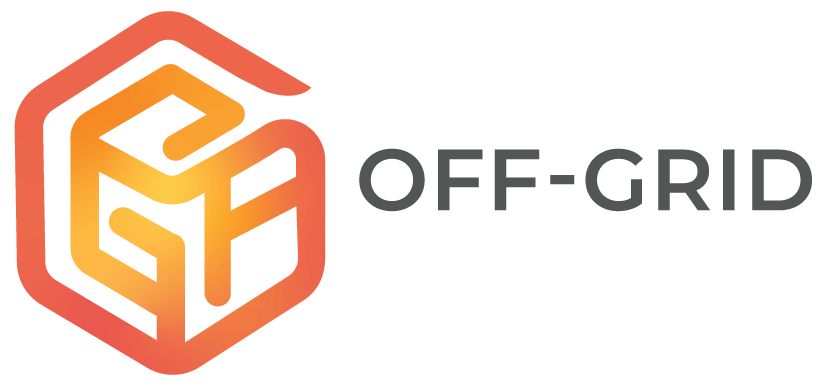Unlock the potential of Facebook and Instagram marketing with this focused blog post. Here, you’ll discover effective methods to shape your strategy, target the right audience, and craft engaging content for both platforms. Expect practical advice on using their unique features to your advantage, managing successful ad campaigns, and interpreting analytics to refine your approach. Embark on this journey to elevate your brand’s social media game, turning insights into actions for measurable growth.
Key Takeaways
Facebook and Instagram marketing requires a diverse approach to content, emphasising consistent brand messaging, platform-specific content optimization, and leveraging cross-promotion to maximize reach.
Key elements for setting up successful Facebook Business Pages and Instagram profiles include thorough optimization, verified badges for trust, and a visually cohesive brand presence that aligns with each platform’s unique features and user preferences.
Utilizing the advanced targeting options of Facebook Ads Manager and crafting visually impactful Instagram ads are essential for engaging specific audiences and measuring performance with detailed analytics to refine social media marketing strategies.
Harnessing the Power of Social Media: Integrating Facebook and Instagram into Your Marketing Strategy

With over 3 billion monthly active Facebook users, Facebook stands as the social media giant, reaching the largest potential audience of any social platform. This prevalence, particularly in the 25-34 age group, makes it a fertile ground for marketers. To tap into this potential, a combination of organic and paid content creation is key to a successful Facebook marketing strategy. Utilizing various content formats such as:
Images
Videos
Carousels
Collections
It can significantly enhance engagement. The benefits and process of launching a Facebook ad campaign can further amplify your reach, making it worth investing in a full ad campaign, especially when aiming to expand your audience quickly.
On the other hand, with its visually captivating interface and highly engaged user base, Instagram offers a different flavour of opportunity. But establishing a clear strategy is vital to make the most of Instagram marketing. This strategy should be based on your goals and audience insights, incorporating unique and high-quality content to help your brand stand out.
When incorporating Facebook and Instagram into your marketing strategy, focus on three key areas: maintaining a consistent brand message across platforms, tailoring content for each platform, and expanding your reach through cross-promotion. Let’s delve into each of these components.
Crafting a Unified Brand Message Across Platforms
In the vast social media landscape, brand identity consistency is vital. It enhances brand recognition and nurtures trust with the audience. Imagine scrolling through your Instagram feed and coming across a post from a brand you follow on Facebook. If the brand aesthetics are inconsistent, you might not even recognize it’s the same brand, leading to missed opportunities for engagement.
Creating this consistency goes beyond using the same logo or colour scheme. It’s about establishing a consistent tone of voice, visual style, and even the content you share. For instance, when setting up an Instagram Shop, considering your brand identity carefully ensures a unified brand presence across platforms, providing a seamless user experience.
Optimizing Content for Each Platform
The next step in our journey involves optimizing content for each social media platform. While Facebook and Instagram may be owned by the same parent company, they offer unique features catering to user behaviours and preferences.
For Instagram, the visual appeal of your content is key. To ensure images are displayed at their best, they should be of the optimal size of 1080 x 1080px for square posts. Beyond size, the quality of your photos plays a crucial role. Natural lighting can improve your photos’ quality, avoiding harsh shadows and overexposure. You can leverage Instagram’s built-in tools and third-party apps like Facetune 2 and VSCO for advanced photo editing.
On Facebook, engagement is the name of the game. One way to boost engagement is through Facebook Events. Creating events through your Business Page allows you to convert passive scrollers into active participants and foster community engagement.
Cross-Promoting for Broader Reach
With a consistent brand message and tailored content, it’s time to discuss how to broaden our reach. And one effective way to do this is through cross-promotion. The beauty of using both Facebook and Instagram is that they offer features that allow for seamless cross-promotion. For instance, Instagram allows for sharing posts and stories directly to Facebook, thereby increasing the visibility of your content.
Cross-promotion also extends to stories. You can utilize features like countdowns and question stickers that can be shared across both platforms. This keeps your content consistent across platforms and increases your odds of user engagement.
Another powerful feature is the integration of Facebook’s ad system with Instagram. This allows you to maximize campaign efficiency by leveraging shared data insights and ad tools.
Building a Strong Foundation: Setting Up Your Social Pages for Success

Having addressed the broader strategies, it’s time to focus on setting up your social pages. Whether starting from scratch or looking to refine your existing pages, a well-optimized Facebook Business Page and Instagram profile can lay a strong foundation for your brand’s social media success.
To create a Facebook business page, follow these steps:
For Instagram, the process involves switching to a professional account via the settings and optimizing your bio with a profile picture, a brief brand description, a website link, and contact details. But we’re not stopping here. Let’s get into the details of each platform.
Creating Engaging Facebook Business Pages
Your Facebook Business Page is where all the magic happens. It’s where you’ll post updates, interact with your audience, and even run your Facebook ad campaigns. But before you can do that, you must ensure your page is fully optimized.
Proper setup and navigation of Meta Business Suite is critical for managing and optimizing your Facebook Business Page. It’s a comprehensive tool that allows you to manage all your Facebook business assets in one place, including your pages, ad accounts, and catalogues.
Another key aspect of an engaging Facebook Business Page is trust. And what better way to instil trust than obtaining a verified badge for your page? This simple checkmark can deter impersonation and help your brand stand out.
Developing a Visually Compelling Instagram Presence
While Facebook allows for more text-based content, Instagram is all about the visuals. It’s a platform where images reign supreme, and a compelling visual presence is the key to standing out.
To achieve this, maintaining a consistent brand aesthetic on Instagram is crucial. This helps avoid confusion and loss of followers, reinforcing your brand identity. Consistency is key, whether for a minimalist black-and-white look or a vibrant colour palette.
Another important aspect of your Instagram presence is your Instagram Shop. By optimizing your Shop with clear calls to action and link trees in your bio, you can efficiently guide users towards making a purchase or visiting desired pages.
Targeted Advertising: Mastering Facebook Ads Manager and Instagram Ad Campaigns

Having a strong social media presence is just one piece of the puzzle. To truly maximize your brand’s potential, targeted advertising is a must. Digital marketing can help your brand reach the right audience at the right time by harnessing the power of Facebook Ads Manager and Instagram Ad Campaigns. Understanding how to launch a Facebook ad campaign using Facebook Ads Manager is crucial for tapping into the platform’s vast audience and maximizing your advertising efforts.
Facebook Ads Manager is an essential tool for creating targeted advertising campaigns, including Facebook and Instagram advertising. It allows advertisers to reach specific audiences based on various factors such as demographics, location, behaviour, and interests. You can create visual ads on Instagram that capture your audience’s attention and drive engagement. Let’s delve deeper into the benefits of utilizing Instagram advertising campaigns and each platform’s advertising capabilities.
Crafting Successful Ad Campaigns on Facebook
Crafting successful ad campaigns on Facebook starts with defining your target audience. With Facebook’s advanced targeting options, you can ensure your ads reach the most receptive audiences. You can experiment with different audience segments to refine your targeting skills, making your ad campaigns more effective.
Another valuable resource for crafting successful ad campaigns is the Facebook Ads Library. This tool lets you view and analyze successful ad campaigns worldwide, inspiring your ads.
Lastly, it’s important to remember that advertising costs on Facebook can vary. Factors such as your ad’s objective, targeting options, and bidding strategy can all influence your cost per click (CPC).
Leveraging Instagram Ads for Visual Impact
On Instagram, the focus is on visual impact. Instagram ads should use high-quality images or videos to leverage the platform’s visual nature and effectively engage the target audience. But it’s not just about the visuals – the consistency between your visual elements and ad copy is crucial for enhancing the ad’s performance and engaging viewers.
Beyond creating compelling ads, consider collaborations with influencers and other brands to expand your brand’s presence and reach on Instagram. Influencers already have an engaged audience that trusts their recommendations, making them perfect partners for your Instagram ad campaigns.
Engaging Content Strategies: Captivating Your Audience with Quality Posts

We’ll now focus on content after discussing the technical side of Facebook and Instagram marketing. Engaging content is the heart of social media marketing. It captures your audience’s attention, drives engagement, and converts followers into customers.
An effective content strategy involves a mix of photos, images with text, and videos. This variety caters to diverse audience preferences and ensures your content remains fresh and engaging. Content strategy isn’t just about creating content. It’s also about learning how to engage your audience with high-quality posts using video marketing and user-generated content.
Video Marketing: Embracing Facebook Live and Instagram Reels
Video content is one of the most engaging forms of content on social media. It’s dynamic and engaging and can convey your brand’s story in a way that static images can’t. And with features like Facebook Live and Instagram Reels, you can take your video marketing strategy to the next level.
Facebook Live allows real-time video streaming, providing a unique opportunity to connect with your audience instantly. Whether you’re hosting a Q&A session, revealing a new product, or showcasing a behind-the-scenes look at your operations, Facebook Live can create unique, engaging content that encourages viewer participation and enhances brand storytelling.
On the other hand, Instagram Reels allows for creating short, 15 or 30-second looping videos. With its various creative tools, you can create engaging, bite-sized content that new audiences can easily share and discover.
User Generated Content: Building Community and Trust
User-generated content (UGC) is a powerful tool for building community and fostering trust. It involves leveraging content your customers or followers created, such as reviews, testimonials, or user-created photos and videos of your products.
One effective way to generate UGC is through Instagram contests and giveaways. These contests encourage your followers to create content featuring your brand, increase brand exposure, and foster customer interaction.
On Facebook, you can foster user engagement by:
Offering exclusive content and privileges in Facebook Groups
Incentivizing customer involvement
Enhancing their experience
Leading to a more engaged community.
Analytics and Insights: Measuring Your Social Media Marketing Performance

After dedicating time and resources to your social media marketing, tracking their performance is essential. Understanding how your content and ads perform can provide valuable insights, allowing you to refine your strategies and maximize your return on investment.
Both Facebook and Instagram offer robust analytics tools that can help you track conversions and user interactions. These tools go beyond superficial data, allowing you to measure the true performance of your marketing strategies. Let’s dive deeper into understanding social media metrics and refining your strategy with data.
Understanding Social Media Metrics
Social media metrics function as a scorecard for your marketing efforts, highlighting data such as:
views
likes
shares
conversions
Among these, the engagement rate is a key metric. It signifies the percentage of interactions relative to your audience size and can be measured through total interactions divided by the number of followers.
Other important metrics include reach and impressions. The former measures the unique users who have seen your content, while the latter counts how often your content has been displayed. These metrics can aid in assessing your brand’s visibility.
It’s also crucial to monitor specific metrics on Instagram, such as:
Engagement rate
Follower growth rate
Website referral traffic
Prime posting times
Utilizing social media metrics dashboards can facilitate tracking this data, integrating reports for comparative analysis across platforms.
Refining Your Strategy with Data
Data is not just about numbers; it’s about insights. These insights can guide improvements in your marketing campaigns. By examining specific metrics on Instagram, like engagement and comment rates, impressions, and reach, you can make informed decisions to refine your strategies.
This process of refinement should be continuous. Social media trends are ever-evolving, and your strategies should adapt accordingly. Ensure your refinements are data-driven, utilizing social media performance metrics to inform your decisions.
In addition to your data, competitive analysis and social listening can provide insights into your competitors’ strategies and performance. This can help inform your strategic adjustments, keeping you ahead of the curve.
Expanding Your E-Commerce Reach: Facebook Marketplace and Instagram Shops

Next, we’ll focus on broadening your e-commerce reach. Features like Facebook Marketplace and Instagram Shops allow you to sell products directly on these platforms, providing a seamless shopping experience for your customers.
Integrating Facebook Marketplace into your social media marketing strategy can potentially increase product visibility and sales through direct interaction with consumers on the platform. On Instagram, you can create a digital catalogue within the app, allowing users to browse and purchase products directly. Let’s delve into more details.
Selling on Facebook Marketplace
To maximize sales on Facebook Marketplace, it’s crucial to:
Create listings that accurately and attractively present your products.
Provide accurate and detailed descriptions.
Engage effectively with potential buyers.
Leverage the platform’s features to increase your product visibility.
Following these steps can reach a wider audience and boost your sales on Facebook Marketplace.
Remember, successful selling on Facebook Marketplace isn’t just about listing your products; it’s also about customer engagement. Employing best practices for listing products and customer engagement is essential for maximizing your sales potential on Facebook Marketplace.
Creating Shoppable Experiences on Instagram
On the other hand, Instagram offers a more visual shopping experience with Instagram Shops. This feature allows you to create a digital catalogue within the Instagram app, providing a seamless shopping experience for your followers.
Setting up an Instagram shop requires the following steps:
Transition to a Business or Creator Account.
Link your Instagram account to a Facebook page.
Upload a product catalog.
Undergo an approval process.
Once your shop is set up, you can tag products in posts and stories, making them shoppable for your followers.
Remember, an Instagram Shop isn’t just a catalogue; it’s an extension of your brand. To ensure a cohesive and appealing shopping experience, your shop should reflect your brand aesthetic and be optimized with clear calls to action.
Beyond Posting: Utilizing Facebook Groups and Instagram Stories for Engagement

While creating engaging content and implementing targeted ad campaigns are vital, social media marketing involves more. To truly engage your audience and foster a sense of community, you can leverage features like Facebook Groups and Instagram Stories.
Facebook Groups allow you to build lasting relationships with customers who willingly join and engage with your group’s content. On Instagram, Stories offer a great opportunity for businesses to be discovered by new audiences, with their temporary nature creating a sense of urgency that can drive engagement. Let’s delve into how to utilize these features effectively.
Cultivating Communities with Facebook Groups
Facebook Groups serve as a platform where you can:
Engage with your audience in a more personal and direct manner.
Bypass the Facebook news feed algorithm.
Build lasting relationships with customers who willingly join and engage with your group’s content.
Building strong ties within your Facebook Group involves more than just posting updates. It’s about fostering a sense of community and recognition among members. This can be achieved through monthly member appreciation posts’, facilitating in-person meetings, and leveraging Community Chats for real-time engagement.
Moreover, properly welcoming new members can significantly contribute to establishing a positive community culture. This involves acknowledging their presence and making them feel valued and included.
Storytelling with Instagram Stories
Instagram Stories provides a unique platform for storytelling. With its ephemeral nature, you can share momentary glimpses into your brand’s world, fostering a sense of intimacy and immediacy with your audience.
Tagging other accounts in your Instagram Stories allows you to share diverse content, such as behind-the-scenes footage, company culture, and limited-time offers. This not only fosters engagement but also connectivity with the audience.
Adding interactive features like polls to your Stories can also boost engagement. These features make your Stories more engaging and provide a direct way to gather feedback from your audience.
Navigating Challenges and Opportunities of Facebook and Instagram Marketing: Adapting to Platform Updates

The realm of social media is continuously changing. Frequent algorithm updates by platforms alter how content is ranked and shown to users. Instagram, for example, utilizes different sets of ranking signals for features like Explore and Reels, influencing content visibility on each surface.
While these updates can pose challenges, they also bring opportunities. By staying informed about these changes and understanding how they affect your content and ads, you can adapt your strategies accordingly and continue to reach your target audience effectively.
Keeping up with platform updates requires a proactive approach. It involves:
Regularly checking updates from the platforms themselves
Following reputable social media marketing blogs
Experimenting with new features and strategies.
Summary
As we’ve explored, maximizing your brand’s potential with effective Facebook and Instagram marketing strategies involves much more than posting content. It requires a comprehensive understanding of each platform’s unique features and the ability to adapt to their ever-evolving algorithms.
Every aspect is crucial to your overall marketing success, from crafting a unified brand message and optimizing content to utilizing targeted advertising and fostering community engagement. As you embark on this journey, remember to keep your audience at the centre of your strategies. After all, they are the heart of your social media presence. With a clear strategy and a commitment to continuous learning and adaptation, you can effectively harness the power of Facebook and Instagram to take your brand to new heights. If you want to learn more, you can Enrol in the Off-Grid Singapore Digital Marketing course “Marketing with Facebook and Instagram“.
Frequently Asked Questions
What are some effective strategies for integrating Facebook and Instagram into my marketing strategy?
Integrating Facebook and Instagram into your marketing strategy involves crafting a unified brand message, optimizing content for each platform, and cross-promoting your content. This will help you reach a broader audience and maximize your impact.
How can I create engaging Facebook Business Pages and Instagram presence?
To create engaging Facebook Business Pages and Instagram presence, you should utilize Meta Business Suite, verify your Facebook page, add ‘Send message’ buttons to your posts, maintain a consistent brand aesthetic on Instagram, and optimize Instagram Shops with clear calls to action. These strategies will help you create a compelling online presence.
How can I craft successful ad campaigns on Facebook and Instagram?
To craft successful ad campaigns on Facebook and Instagram, utilize advanced targeting options in Facebook Ads Manager, create visually appealing ads on Instagram, and consider influencer collaborations for wider reach. These strategies will help you drive engagement and achieve your advertising goals.
How can I measure my social media marketing performance?
You can measure your social media marketing performance by utilizing the analytics tools from Facebook and Instagram. These tools offer valuable insights for refining your strategies. They allow you to track conversions and user interactions, helping you understand how your content and ads perform.
What are some ways to engage my audience beyond just posting content?
You can engage your audience by using features like Facebook Groups and Instagram Stories to foster community and recognition among members and incorporating interactive content such as polls. These methods can help create a deeper level of engagement with your audience.




